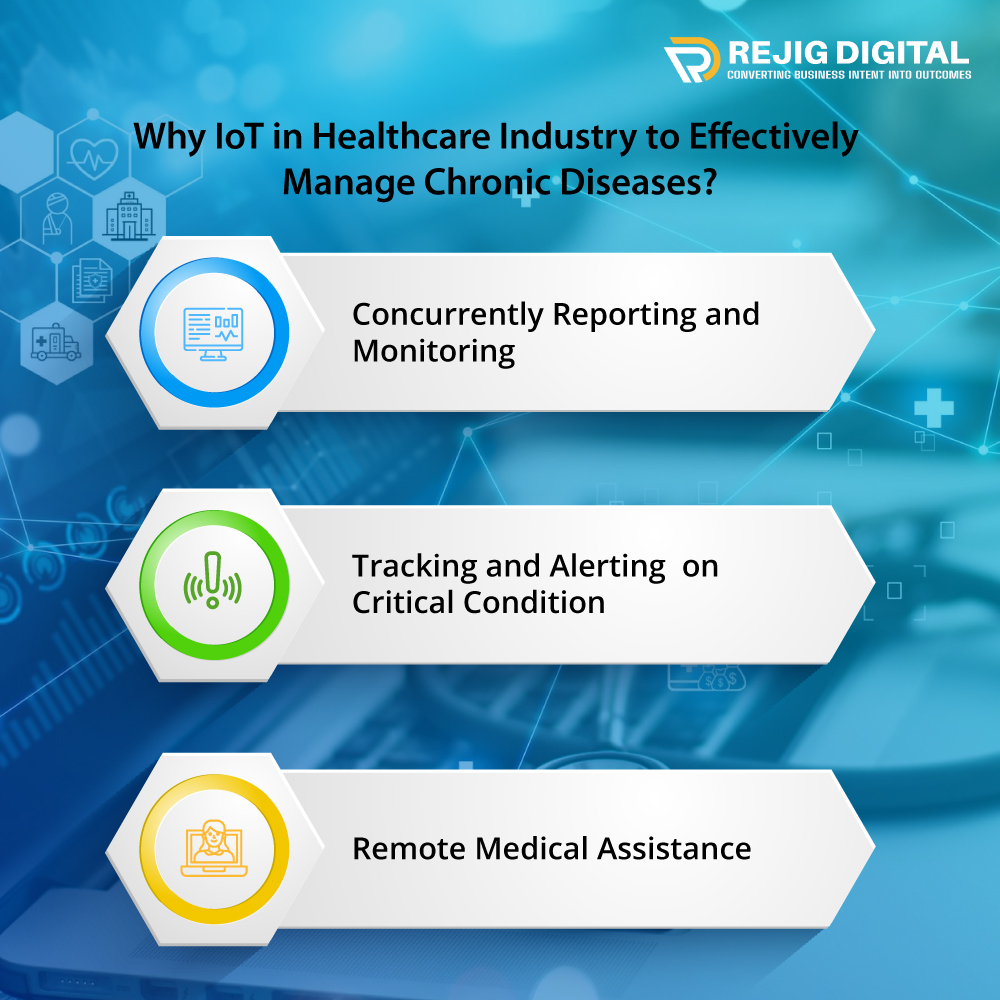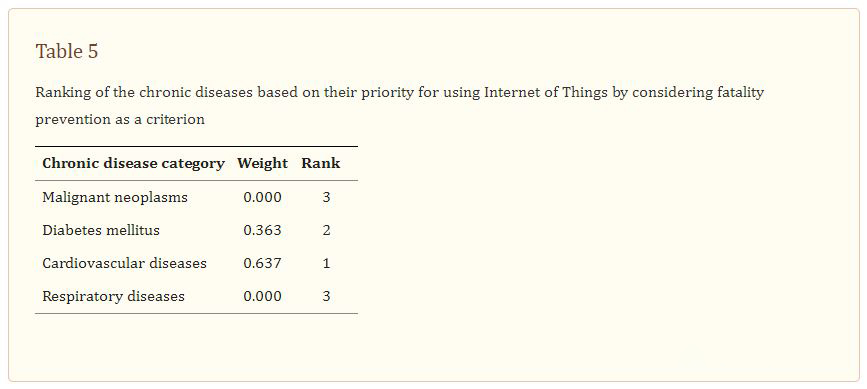The rapid advancement in connected and intelligent equipment has shifted our focus from basic to the smart expansion of the IoT-enabled ecosystem. One area that also has captured people’s attention is the transformative impact of IoT in healthcare industry based on connected devices, sensors, and networks.
We are well aware of how IoT integration enables healthcare to undergo a massive experience of bringing connected processes, personalised care, and data-driven decision-making. Amongst all, patient monitoring is constantly a concerning factor for healthcare services providers, nowadays which also become a seamless process to achieve through IoT-based devices. Isn’t it amazing?
Yes, with IoT remote monitoring of patients has become a reality. IoT plays an incredible role in managing chronic disease from any location.
Understanding of Chronic Diseases
Chronic diseases are medical conditions that persist for a year or more, necessitating ongoing medical care or restricting daily activities, or both. These diseases, including heart disease, cancer, and diabetes, are the primary causes of death and disability in the United States.
Furthermore, they are responsible for a significant portion of the nation’s annual healthcare expenditures, which currently amount to $4.1 trillion. As a result, addressing chronic illnesses is of critical importance in improving the health and financial wellbeing of the country. Source
Why IoT in Healthcare Industry to Effectively Manage Chronic Diseases?
We are now aware that chronic disease is a long-term condition that requires constant interaction of doctor and patient, moreover ongoing medical attention and management. While every time, the visiting premise might be time-consuming and not possible to conduct process. Consequently, patients will postpone the appointment intentionally or due to any reason.
which essentially won’t occur. In this case, IoT-based remote patient monitoring for chronic illness patients has become quite important. Let’s see how IoT in healthcare industry helps chronic disease management.

Concurrently Reporting and Monitoring
- Remote monitoring of chronic disease patients through IoT devices enables healthcare service providers to gather vital information on patient health in real-time. This information can be gathered from any IoT-enabled medium such as a wearable including a fitness tracker.
- Once an individual is diagnosed with a chronic disease, it takes a longer time to overcome it, while throughout the stages it demands regular checkups to prevent serious complications.
- Thus, the transmission of patient health data makes doctors capable of keeping track of chronic diseases infected patients’ health status in order to make appropriate prevention measures. Moreover, pave easier ways to maintain reports.
Tracking and Alerting on Critical Condition
- IoT in healthcare industry with the process of tracking and sending alerts on critical conditions of chronic disease patients is an innovative approach. Through it, healthcare services providers are capable of improving the life span of patients by devoting personalised care.
- With the help of IoT devices, doctors can track the chronic disease patients’ vital factors including blood pressure, blood sugar level, and heart rates, and also track medication adherence.
- By continuously tracking these parameters, the system can detect any variations from normal levels and trigger an alert to the healthcare provider or caregiver if there is a critical condition. This enables timely intervention, which can be lifesaving in some cases of chronic disease.
Remote Medical Assistance
- In the realm of chronic disease management, IoT-enabled remote medical assistance is a game changer and holds the potential to deliver exceptional patient experience. Besides tracking and monitoring chronic disease-infected patients’ health, IoT in healthcare industry empowers service providers to cater real-time assistance from remote locations without the hassle of being present on the premises.
- IoT application in healthcare can also be used in the process of chronic disease management to automate the delivery of medication and provide reminders to patients to take their medication on time, improving medication adherence, and reducing the risk of complications.
Internet of Things for Chronic Diseases: Prioritisation




Source: https://www.ncbi.nlm.nih.gov/pmc/articles/PMC8253318/
IoT in Healthcare: Process of Getting Started with Chronic Disease Management

Step1: Identify the Patient
Identifying the patient is the first step in IoT-enabled chronic disease management. Making a list of patients who can benefit from remote monitoring and assistance eases the entire process. Healthcare providers can identify such patients based on their medical history, current health status, and risk factors.
Step 2: IoT Device Selection
Once the patient is identified, the next step is to select the appropriate IoT-powered devices or network for monitoring and collecting data. The devices can include blood glucose monitors, blood pressure monitors, smart scales, and wearable devices such as fitness trackers.
Step 3: Data Collection and Analysis
The IoT medical devices are designed with the only purpose to gather data and transmit it. Thus, it will continuously collect data on the patient’s health status, which is then transmitted to a central system for analysis. The data can include vital signs, medication adherence, and lifestyle habits. Advanced analytics tools can be used to analyse the data and identify any critical conditions or trends.
Step 4: Care Plan Development
Based on the data analysis, healthcare providers can develop a personalised care plan for chronic disease patients. The entire care plan can include medication adjustments, lifestyle changes and improvements, and a follow-up appointment list. The care plan can be modified based on real-time data collected from IoT devices.
Step 5: Remote Monitoring
IoT devices enable remote monitoring of the patient’s health status, allowing healthcare providers to intervene early in case of any critical conditions and make appropriate prevention moves before any serious complication occurs. The system can generate alerts if the data collected indicate any deviations from the care plan or if there is a need for urgent medical attention.
Step 6: Patient Education and Engagement
For better outcomes and effective improvement in chronic disease patients, they need to be completely aware of the entire process. Moreover, patients need to be educated and engaged in the process of chronic disease management. IoT devices can facilitate patient education and engagement by providing real-time feedback and reminders to patients about medication, lifestyle changes, and follow-up appointments. Additionally, healthcare providers can use the data collected from IoT devices to provide patients with personalised guidance and recommendations.
Step 7: Continuous Improvement
IoT in healthcare industry for chronic disease management is an iterative process that requires continuous improvement and tracking. Healthcare providers can use the data collected from the IoT devices to evaluate the effectiveness of the care plan and make modifications if necessary.
Final Thoughts on Using IoT in Healthcare Industry to Better Manage Patients with Chronic Illness
Healthcare IoT solutions emerging as an effective approach to better manage chronic disease. Healthcare providers are also at the forefront to embrace the IoT with all its potential that is unexplored yet. Are you looking forward to adopting an IoT solution for your business? We are here for you as your tech partner.
Rejig Digital is a leading IoT Solution Provider catering to our services across the globe and creating our mark on various industry types and countries. We are a team of experts with 10+ years of experience in the tech domain and keep themselves updated regarding ongoing market trends. We already deliver our solution to 250+ clients with vertical businesses including IoT application in healthcare.




